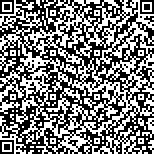| 引用本文: |
兰玉娟, 冯玲媚, 杨硕, 詹红丽, 王隐羽, 刘明辉.针刀联合意念运动治疗脑卒中后痉挛性偏瘫的临床疗效观察[J].湖南中医药大学学报,2024,44(9):1620-1626[点击复制] |
|
| |
|
|
| 本文已被:浏览 564次 下载 201次 |
| 针刀联合意念运动治疗脑卒中后痉挛性偏瘫的临床疗效观察 |
| 兰玉娟,冯玲媚,杨硕,詹红丽,王隐羽,刘明辉 |
| (贵州中医药大学, 贵州 贵阳 550002;贵州中医药大学第二附属医院, 贵州 贵阳 550003) |
| 摘要: |
| 目的 探讨针刀联合意念运动疗法治疗脑卒中后痉挛性偏瘫的临床疗效。方法 将符合标准的80例脑卒中后痉挛性偏瘫患者随机分为治疗组和对照组,每组40例。对照组予以常规康复训练,治疗组予以针刀联合意念运动疗法后再行常规康复训练。常规康复训练1次/d,连续5 d后休息2 d,共治疗4周;针刀联合意念运动在每周一、周四治疗,共治疗4周。观察两组患者治疗前、治疗2周后、治疗4周后静息状态下偏瘫侧肢体被动活动时的改良Ashworth痉挛评定量表(modified Ashworth scale, MAS)分级、Fugl-meyer运动功能评定量表(Fugl-meyer assessment, FMA)评分、日常生活活动能力巴氏指数(Barthel Index, BI)评分以及治疗前后痉挛肌肉杨氏模量平均值(Emean值),并评估两组的临床疗效。结果 (1)两组治疗2周后、4周后上肢FMA评分均高于治疗前(P<0.05),且治疗4周后上肢FMA评分高于治疗2周后(P<0.05);治疗组在治疗2周后、4周后上肢FMA评分均高于对照组(P<0.01)。两组治疗4周后下肢FMA评分高于治疗前(P<0.05);治疗组在2周时下肢FMA评分低于对照组(P<0.05),在治疗4周时下肢FMA评分与对照组差异无统计学意义(P>0.05)。(2)两组治疗4周后BI评分均高于治疗前(P<0.05);治疗组在治疗2周后BI评分与对照组差异无统计学意义(P>0.05),在治疗4周后BI评分高于对照组(P<0.01)。(3)治疗后,两组患侧上肢肱二头肌及下肢小腿三头肌Emean值均低于治疗前(P<0.01);且治疗组均低于对照组(P<0.01)。(4)两组治疗2周后、4周后肢体MAS分级均低于治疗前(P<0.05),且治疗4周后均低于治疗2周(P<0.05);治疗组在治疗4周后MAS分级低于对照组(P<0.05)。(5)治疗2周后,两组临床疗效比较,差异无统计学意义(P>0.05);治疗4周后,治疗组临床疗效优于对照组(P<0.05)。结论 针刀联合意念运动疗法可有效改善脑卒中偏瘫患者痉挛程度,促进患者随意运动及协调运动能力的恢复,提升患者生活自理能力,增加患者康复的信心。 |
| 关键词: 脑卒中 痉挛性偏瘫 针刀 意念运动 康复训练 临床应用 |
| DOI:10.3969/j.issn.1674-070X.2024.09.010 |
| 投稿时间:2024-02-22 |
| 基金项目:贵州省科技成果应用及产业化计划(临床专项)(黔科合成果-LC〔2023〕038);贵州省中医药管理局中医药、民族医药科学技术研究课题(QZYY-2023-035);冯玲媚贵州省名中医传承工作室资助项目(黔中医药函〔2023〕21号)。 |
|
| Clinical efficacy observation of acupotomy combined with ideomotor therapy in treating spastic hemiplegia after stroke |
| LAN Yujuan, FENG Lingmei, YANG Shuo, ZHAN Hongli, WANG Yinyu, LIU Minghui |
| (Guizhou University of Chinese Medicine, Guiyang, Guizhou 550002, China;The Second Hospital of Guizhou University of Chinese Medicine, Guiyang, Guizhou 550003, China) |
| Abstract: |
| Objective To explore the clinical efficacy of acupotomy combined with ideomotor therapy in the treatment of spastic hemiplegia after stroke. Methods Eighty patients with spastic hemiplegia after stroke who met the criteria were randomly assigned into a treatment group and a control group, with 40 patients in each group. The control group received routine rehabilitation training, while the treatment group received acupotomy combined with ideomotor therapy before routine rehabilitation training. Routine rehabilitation training was conducted once a day, with 5 consecutive days followed by 2 days of rest, for a total of 4 weeks; acupotomy combined with ideomotor therapy was taken every Monday and Thursday for a total of 4 weeks. The following results before and after treatment in two groups of patients with passive activity of hemiplegic limbs in a resting state were observed before treatment, 2 and 4 weeks after treatment respectively: the modified Ashworth scale (MAS) grading, the Fugl-Meyer assessment (FMA) of motor function score, the Barthel Index (BI) score of daily living ability, and the mean Young's modulus of spastic muscles (Emean value). The clinical efficacy of both groups were then evaluated. Results (1) After 2 weeks and 4 weeks of treatment, the upper limb FMA scores in both groups were higher than those before treatment (P<0.05), and the upper limb FMA scores were higher after 4 weeks of treatment than after 2 weeks of treatment (P<0.05); the upper limb FMA scores of the treatment group were higher than those of the control group after 2 and 4 weeks of treatment (P<0.01). After 4 weeks of treatment, the lower limb FMA scores in both groups were higher than those before treatment (P<0.05); the lower limb FMA score of the treatment group was lower than that of the control group at 2 weeks of treatment (P<0.05), and there was no statistically significant difference in lower limb FMA score between the treatment group and the control group at 4 weeks of treatment (P>0.05). (2) After 4 weeks of treatment, the BI scores of both groups were higher than those before treatment (P<0.05); There was no statistically significant difference in BI score between the treatment group and the control group after 2 weeks of treatment (P>0.05), but the BI score was higher than that of the control group after 4 weeks of treatment (P<0.01). (3) After treatment, the Emean scores of the upper limb biceps and lower limb triceps on both affected sides were lower than those before treatment (P<0.01); and those of the treatment group was lower than the control group (P<0.01). (4) After 2 and 4 weeks of treatment, the MAS grading of the limbs in both groups were lower than those before treatment (P<0.05), and after 4 weeks of treatment, it was lower than after 2 weeks of treatment (P<0.05); the MAS grading of the treatment group was lower than that of the control group after 4 weeks of treatment (P<0.05). (5) After 2 weeks of treatment, there was no statistically significant difference in clinical efficacy between the two groups (P>0.05); after 4 weeks of treatment, the clinical efficacy of the treatment group was better than that of the control group (P<0.05). Conclusion The acupotomy combined with ideomotor therapy can effectively improve the spasticity level of stroke patients with hemiplegia, promote the recovery of their ability to move freely and coordinate movements, enhance their self-care ability, and increase their confidence in recovery. |
| Key words: stroke spasmodic hemiplegia acupotomy ideomotor rehabilitation training clinical application |
|

二维码(扫一下试试看!) |
|
|
|
|




